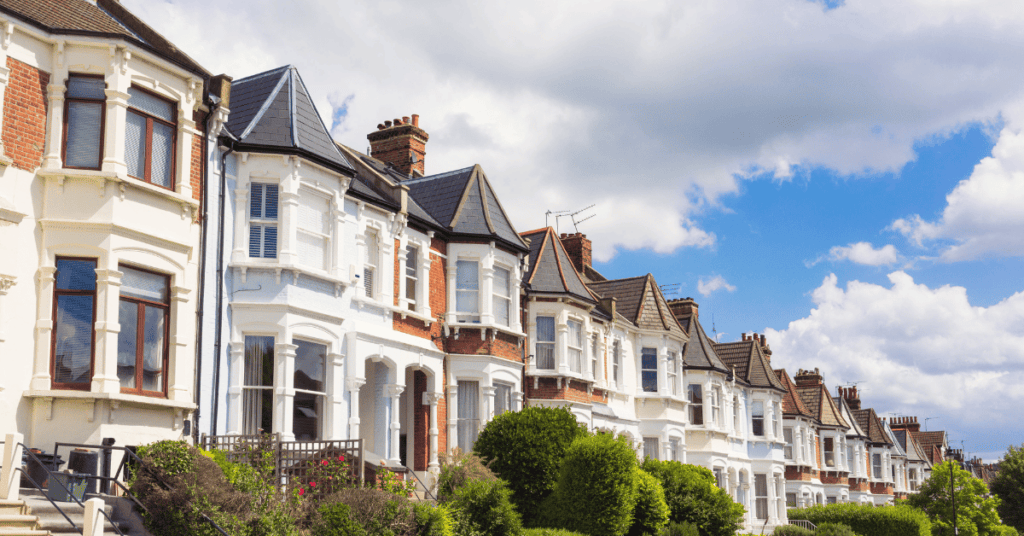Unlock Your Home Equity with Figure
- Approval in 5 minutes. Funding in as few as 5 days
- Borrow $20K-$400K
- Consolidate debt or finance home projects
- Fastest way to turn home equity into cash
- 100% online application
This article contains affiliate links. We may receive compensation if you use a partner bank for financing. We never recommend a service we wouldn’t use ourselves. Period.
Has someone you know suggested using a home equity line of credit (HELOC) to pay off your mortgage?
The person giving this advice may have said the HELOC could help you save money in interest while paying down your mortgage debt faster.

But then, maybe you searched online and discovered other people who think a first-lien HELOC is ridiculous, that it’s simply a way for lenders to sell more loans.
So who’s right? Is a first-lien HELOC really a good idea? More importantly, is it a good idea right now?
Before getting into the first-lien HELOC payoff strategy, let’s cover some important terminology.
As you probably know, a lien is a claim to ownership of your home. Your primary mortgage lender holds a lien against your home. That way, if you don’t make your house payments, the lender can cover its losses by selling your home.
Normally, your primary mortgage lender holds the first lien on your home. That way if the lender forecloses, it gets first shot at the proceeds of your home sale.
Home equity lines of credit, or HELOCs, are typically in the second lien position. After the first lien is satisfied, the HELOC lender can get paid from whatever money remains.
When you use HELOC funds to pay off your primary mortgage, the HELOC takes over the first lien position. Most likely, the HELOC lender is the only lien holder at that point.
So how can a HELOC in the first lien position benefit you as a homeowner? Here’s the basic idea:
Basically, you’d be treating the HELOC like your checking account. Earnings go in and payments go out. If you earn, say, $5,000 a month, your HELOC balance would go down by $5,000 on payday but then increase, gradually, as you pay your monthly bills.
If you pay $2,500 in monthly bills, your HELOC balance goes up by $2,500 a month.
But what’s the advantage of doing this?

A regular, fixed-rate mortgage is fairly rigid. When you get a mortgage, its balance starts high and gradually decreases. This is a good quality, most of the time, because it’s so predictable.
From Day 1, when you look at your loan’s Closing Disclosure, you can see exactly how much you’ll pay in interest and principal every month for the next 30 years. The interest you’ll pay is predetermined — assuming you stick to the repayment schedule.
A HELOC is more fluid. It’s designed for a balance that fluctuates. The balance can go up and down, repeatedly, during the HELOC’s initial draw period, which usually lasts 10 years.
Lenders won’t know the balance of your HELOC for decades into the future like they will with a fixed-rate mortgage. So they have to charge interest based on the HELOC’s average balance each month — much like a credit card does.
By putting your monthly income onto the HELOC each month, you’d be lowering the credit line’s average monthly balance and, as a result, lowering the amount of interest you pay.
And, even though the HELOC’s balance would increase as you pay bills throughout the month, it would be trending downward, meaning each month’s interest-bearing balance would be lower than the previous month’s.
The less you spend on monthly bills, the faster you’d pay off the house.
As you can see, this first-lien HELOC strategy is an interesting idea. It’s not simply a way to transfer mortgage debt from one lender to another, generating more business for lenders.
But whether this strategy could work for you depends on several variables, including the interest rate of your current mortgage and the current rate environment for HELOCs.
These examples should help show how these variables would affect your debt.
Let’s say you owe $280,000 remaining on an original $300,000 loan balance. You have a 30-year fixed-rate mortgage at 6%. Your monthly principal and interest payment would be about $1,800.
Transferring that $280,000 balance to a new HELOC at 6% APR would require a minimum monthly interest-only payment of about $1,400. That’s lower than the $1,800 original payment, but remember that the $1,400 does not pay off any principal.
But now let’s say you deposit $8,000 worth of pay checks into the HELOC on the first of the month. Then you had $3,000 in expenses. So for the month, you didn’t pay 6% interest on $5,000. You saved $25 in interest: $5,000 X 6% divided by 12.
So the monthly intertest savings aren’t huge. But, you did end up owing about $4,500 less on your mortgage ($5,000 less the principal you would have paid with a regular mortgage).
As you can see, the real benefit is paying down the loan faster, since the monthly interest savings aren’t huge.
Let’s say the Fed increases rates by 1.5% before you close your HELOC, meaning your new loan would start out at 7.5% APR instead of 6%. This is almost a certainty in 2022 as the Fed is fighting inflation.
At 7.5%, your $280,000 HELOC would require a monthly payment of about $1,750. You would still reduce your loan balance by putting your $8,000 in income directly to the HELOC. But the loan paydown speed would be slower.
And if rates keep rising, your savings keep falling.
HELOCs have variable rates, and there’s always a risk that the Fed will keep jacking up rates.
If your 7.5% rate becomes 8.25% next month and then 9% the month after that, your HELOC savings decrease each month.
And if you’re one of the lucky ones who locked in a rock-bottom mortgage rate in the 2s or 3s, the HELOC strategy could be devastating. Imagine paying 10% on your mortgage instead of 2.5%!
At 10%, a $280,000 HELOC costs over $2,300 per month in interest. At 2.5%, your loan is costing you just $583 per month in interest.
That’s one reason this strategy isn’t always a good idea.

HELOCs are based on prime rate, which is based on the Federal Funds Rate. As you probably know, the Fed is on an aggressive rate-hiking path right now.
Forecasters predict the Fed will raise rates by another 1.25% by year’s end. Unlike a fixed-rate loan, a HELOC’s rate will keep rising along with the Federal Funds Rate.
Interest rates in this territory won’t eat all of your savings from using the first-lien HELOC strategy, but they will definitely make the idea less attractive.
You’d be inching closer and closer to the point — after rates entered double-digit territory, probably — where you’d stop saving money and the HELOC would start costing you, compared to your original fixed-rate loan. Nobody wants that.
A first-lien HELOC’s potential to save you money depends on the loan’s annual percentage rate compared to your current fixed rate. Lower rates open up more room in your budget to pay down the principal balance.
For example, let’s consider someone with a 6% fixed rate, at the beginning of 2020, who replaced their primary mortgage with a HELOC. This borrower would have made significant progress paying down principal in 2020 and 2021, when rates were setting historic lows again and again.
Of course, rates that low may never come around again. Still, when rates do plateau and start to recede, this strategy will become more and more attractive again — especially for someone with a fixed rate in the 6% to 7% range.

Saving money with the first-lien HELOC strategy will always be rate-dependent, but here are some pros that apply to the strategy in general:
Increasing mortgage rates make a first-lien HELOC more risky. But the following drawbacks apply during any rate environment.
The first-lien HELOC strategy isn’t bogus. It really can save money on long-term mortgage interest.
But only if you’re disciplined enough to treat the HELOC like a primary mortgage instead of using its flexibility to pay for a new car, a vacation, or to get out of a hole.
And you’ll always save the most by timing your HELOC with a period of decreasing interest rates.

Our advice is based on experience in the mortgage industry and we are dedicated to helping you achieve your goal of owning a home. We may receive compensation from partner banks when you view mortgage rates listed on our website.

